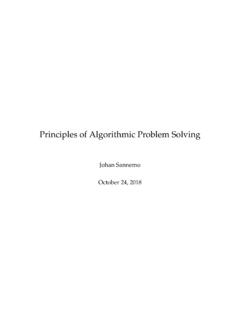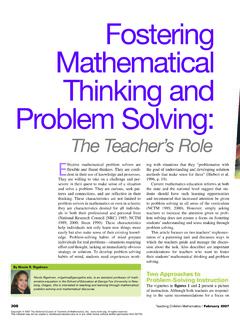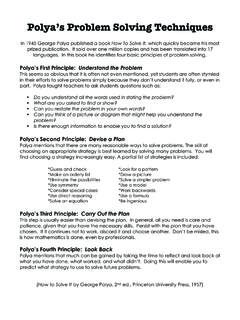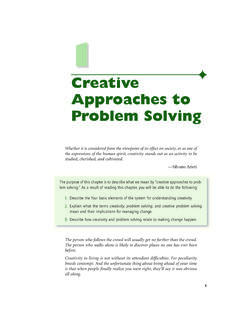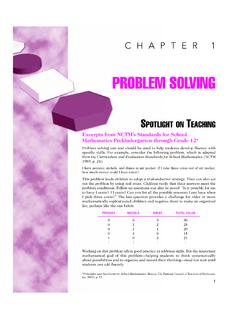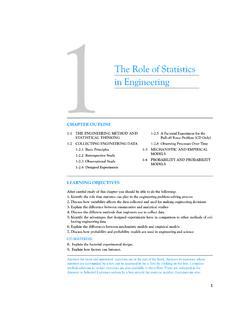Transcription of CASE STUDIES OF STUDENTS WITH EXCEPTIONAL NEEDS
1 6/23/2004 7:33 PM Page 77. FIVE . CASE STUDIES OF STUDENTS . with EXCEPTIONAL NEEDS .. T he case STUDIES in this chapter address the NEEDS of STUDENTS with the exceptionalities most often observed in classrooms. To prepare for the analysis of the STUDIES , review your philosophy of education that you devel- oped in the last chapter to connect your strategies for helping STUDENTS to your belief system about teaching. Remember, the purpose of a philosophy of education is to actualize your beliefs as a teacher. If you fail to consider your philosophy before you begin, your problem solving may produce only super- ficial solutions to the problem. Teacher problem solving is superficial when it addresses only the obvious symptoms of the problem noisy STUDENTS , diffi- cult STUDENTS , low achieving STUDENTS . To be reflective is to consider the larger instructional concerns learning and motivation theory, developmental issues, and individual student history and NEEDS all necessary contributions to fully interpret the situation when attempting to solve the problem.
2 Each case study poses questions but provides no definitive answers, because reflective problem solving and the teacher's own philosophy will determine how the problem is solved. To help you identify the quality of your reflective problem solving , a rubric is included after each case study. The rubric does not provide best answers or solutions but comments on the quality of the problem- solving process itself. The levels of the rubric distinguish three levels of quality describing the problem- solving process. The first level describes a fully devel- oped problem- solving process, where all available knowledge is used to solve 77. 6/23/2004 7:33 PM Page 78. 78 USING CASE STUDIES TO ANALYZE EDUCATIONAL ISSUES. the problem. This includes appropriate theory, research, instructional methods, student data, as well as the values, opinions, and beliefs of those involved in the problem- solving process. The second level describes the use of partial evi- dence during the problem- solving process.
3 For example, the reader's own beliefs and values can be included in the problem- solving process but not to the point of excluding more objective evidence. Objective evidence such as student scores, research, and theory provide a better basis for decision making than what is derived from a single individual's perspective. The third level rep- resents the use of existing knowledge, preconceived ideas, stereotypes, and conventional wisdom that are not examined in relation to the evidence presented in the case study. The third level is not reflective. It uses common or popular wisdom that is of limited value because it does not take into account all knowledge about the problem that is available to the reader. It may also include preconceived ideas that the reader refuses to relinquish even when faced with evidence to the contrary. It produces overly simplistic solutions. In addition to the reflective use of evidence to determine quality of prob - lem solving , educational values are also included in the rubric.
4 Values are included because they are impossible to eliminate from educational determi- nations. The rubric represents a specific value system about education. The value system is student centered, meaning that the educational NEEDS of the student are considered first, paramount to those of the teacher, administration, or school bureaucracy. Often teachers and schools make educational decisions based not on what is in the best interest of the student but on what is easy and convenient for teachers and administrators or what supports the existing bureaucracy or culture of the school. Notice in the top level of the rubric that, when a conflict exists between various interests, it is the student's interests that are honored. A teacher who places the interests of the student ahead of self- interests is acting in a morally reflective manner. In addition, recall from Chapter 2 our first analysis of case STUDIES , the dis- coveries we made, and the lessons that were learned about reflective problem solving .
5 Here is a summary of these: Lesson One: Never make rash judgments about STUDENTS without checking the facts with reliable sources. Never label, belittle, or other- wise speak unkindly about STUDENTS and their parents. Lesson Two: Use data about student achievement and behavior to make the best determination of how to help STUDENTS who have problems. 6/23/2004 7:33 PM Page 79. Case STUDIES of STUDENTS with EXCEPTIONAL NEEDS 79. Lesson Three: Use educational theory to understand and make decisions about how to assist STUDENTS and solve classroom problems. Lesson Four: Learn how to be reflective when solving problems and to recognize the importance of reflection in solving classroom problems and for your continued development as a teacher. One of the most poignant moments in a teacher's career is when he or she realizes there are no simple procedures, four-step processes, or magic plans to solve tough educational problems. At that point, the teacher has to concede that good teaching means having good problem- solving skills.
6 The teacher then begins to systematically apply his or her philosophy of education to the experiences of the classroom. Some of the case STUDIES address controversial issues that are exceedingly difficult to resolve, but the discussion and consid- eration of different viewpoints will lead to a better understanding of the com- plexity of that issue. The vicarious experience of the case STUDIES may even cause you to rethink and rewrite your philosophy. CASE STUDY FIVE ATTENTION DEFICIT/. HYPERACTIVE DISORDER: GABE SILVA (PART I). Susan Sovinski's third year of teaching the second grade was, in her own view, going quite well. Her classroom was quiet, organized, and neat. Her classroom rules were posted for the STUDENTS to see, and for the most part, they followed the rules. Everything was as smooth as could be expected, and Susan was proud of how far she had come since that first terrible year with undisciplined STUDENTS and a confused, noisy classroom.
7 During that first traumatic teach- ing year, many evenings found Susan numb with exhaustion, her ears ringing, and her head thumping. But in the years since, Susan had managed to improve her classroom management and organiza- tion skills and, most importantly, build rapport with her STUDENTS so that learning was the primary classroom event occurring on most days. She was also relieved from the endless skirmishes of discipline and control that had dominated her first year of teaching. That is, until the middle of the year when a handsome bundle of energy named Gabriel Silva transferred into her classroom. 6/23/2004 7:33 PM Page 80. 80 USING CASE STUDIES TO ANALYZE EDUCATIONAL ISSUES. Susan objected to getting an additional student because she had as many STUDENTS as the other second-grade teachers, and she viewed the social ecology of her classroom as in a delicate balance. Like the tropical rain forest where the elimination of one butterfly species could topple the entire forest ecology, she feared any addi- tional alien element that might threaten her hard-won classroom serenity.
8 And Gabe Silva was certainly a natural force to be reckoned with . He was attractive, almost beautiful, with thick dark hair and large brown eyes. He was outgoing, friendly, and talkative with all the STUDENTS and seemed to thrive on creating an audience for his plans and monologues. When it was time for recess, Gabe would enter the playground like a cork popping from a champagne bottle. He would run across the playground at full throttle as if to throw off the sedentary dust of the classroom. He excelled at every game the second-grade boys played, including kickball, stickball, and soccer. He quickly took over the organization of the recess games, assigning teams and positions, arbitrating arguments over rules, and generally directing the other boys in their play. He was the first child on the playground each recess, and he was the last to leave the playground. He would remain on the field kicking the ball around until a teacher specifically called his name to come in.
9 He would then dash across the playground and jump ahead of everyone else in line to be the first to enter the building. Susan watched him on the playground in amazement. She sighed. Where did all that energy come from? How could it be contained in her quiet, organized classroom? Gabe was obviously of Latino descent, but his English was almost unaccented. His reading and math skills seemed nearly at grade level, but his grades were low because he failed to complete or turn in his work. He seemed interested in learning, but he was easily distracted. When Susan assigned work to be done at his seat, he started the page, but soon he was jumping up to sharpen his pen- cil, leaning over to talk with his neighbor, pulling toys from his desk to play with , or simply rummaging through his messy desk searching for things. When Susan stopped to check on him, he would look up from his desk, but often he had forgotten what he had been search- ing for.
10 Susan thought his grades would improve if he were just more organized. He often seemed to complete his work, or at least part of 6/23/2004 7:33 PM Page 81. Case STUDIES of STUDENTS with EXCEPTIONAL NEEDS 81. it, but either he couldn't find it when it was due or he would forget to turn it in. After the STUDENTS left for the day, Susan would go through his things and find dozens of partially completed assign- ments stuffed, wrinkled and torn, in his desk. Susan had never seen such as messy child. Gabe was a little better with the work he took home because he hadn't had time to finish it at school. He com- pleted most of it, but, again, Susan would find the assignments in his desk long after they were due. She asked the principal about Gabe's permanent records, but they had not yet arrived from his old school. During one particularly trying day, when Gabe talked with anyone close to him, Susan resorted to isolating him at the back of the room.










